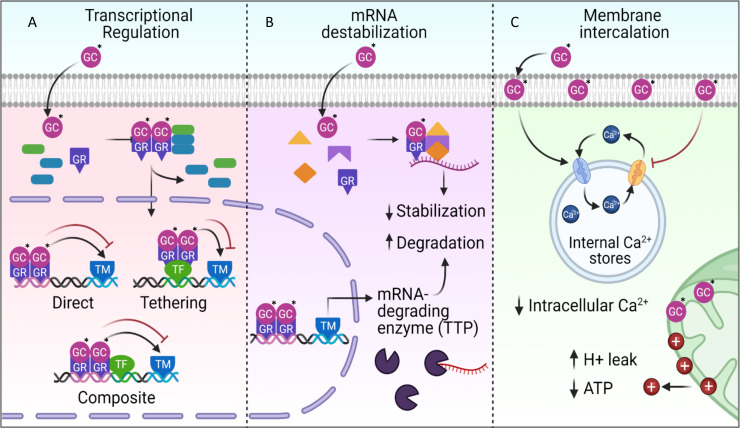Figure 1.
Molecular mechanisms of glucocorticoid (GC) action. (A) GCs are most well known for their effects on DNA transcription of inflammation-related genes. GCs in the cytoplasm associate with chaperone proteins and glucocorticoid receptor α (GR). This complex translocates to the nucleus to bind promoter regions of proinflammatory and anti-inflammatory genes. The GR-GC complex can promote or inhibit gene expression through directly binding the DNA promoter region (Direct); by binding to a transcription factor (Tethering); or by binding both the DNA and the transcription factor (Composite). (B) GCs can also interrupt inflammatory cascades by intercepting mRNA transcripts for proinflammatory genes such as NF-κB. GCs complex with GR and other chaperones to form a protein complex that binds to mRNA causing it to lose stability and degrade.8 9 GR-GC protein complexes also promote the transcription of the mRNA-degrading enzyme TTP, thereby increasing the degradation of cytoplasmic mRNA. (C) GCs induce immediate, non-genomic changes by intercalating in the cell membrane’s lipophilic interior. The intercalating GCs promote a reduction in intracellular calcium and ATP levels (* marks the GC).

